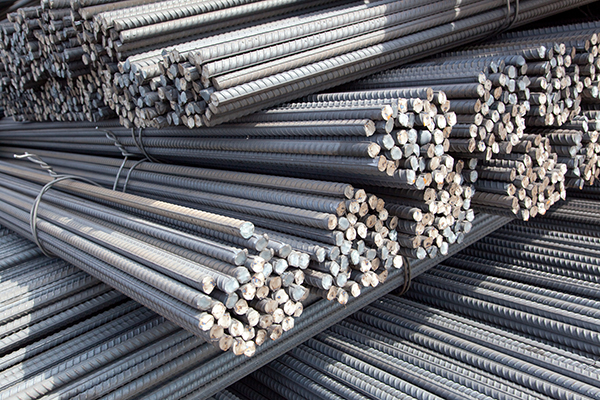
With inflation surging by 4.2% in October, the challenges facing the construction industry are mounting. Kingsley Clarke from Southern Construction Framework outlines ways project managers can mitigate risk and limit the impact of prevailing economic conditions.
They say a week is a long time in politics and if that is the case then a week can seem like an eternity for people in the construction industry. That’s never been truer than today with Brexit, Covid-19 and a climate of risk aversion caused by a volatile economy, combining to have a huge impact on our industry.
Recent research carried out by the Southern Construction Framework (SCF) predicted lead times on vital materials could further increase by up to four weeks in the next year.
SCF expects materials supply and price volatility around brickwork and carpentry and joinery to be key risks to the completion of construction projects within time and budget.
With inflation surging by 4.2% in October, the challenges facing the construction industry are mounting.
There is no magic wand, but there are ways project managers can limit the impact of these risks. Below are some key questions project managers should ask themselves to help deliver projects on time and within budget.
Who: Am I talking to the right suppliers?
This may sound obvious, but project managers should ensure suppliers they are working with reflect the nature and the scale of particular projects.
If you are doing a maintenance job to replace a boiler, then of course it’s fine to use a small, local supplier. But if you are installing boilers across a larger scheme, you would be better off speaking to a main contractor who can advise on the most appropriate and best value supplier.
Also, by virtue of economies of scale, costs attached to the purchase of parts will also be reduced.
Digital tools should also be embraced to connect with suppliers earlier in the pre-construction stage to ensure the right design and specification.
What: Do I know what you need, or do I think I know what I need?
It’s worth considering your specification in the eyes of the supply chain. You will have specific requirements for materials. But are they fixed? Do your requirements for materials reflect the way in which they are sold?
For example, steel is supplied in lengths. If your spec does not match these standard lengths, you have to buy too much or too little and then you may be impacted by inflationary prices. If you can work to the standards of your supply chain, you will make your life and theirs easier.

Also, it is worth asking suppliers what else they sell. Can you consolidate the suppliers you buy from and exploit economies of scale? When using a main contractor, a huge benefit can result from early engagement and working as an integrated team.
When it comes to materials selection, labour availability and the local market seek out market intelligence from reliable sources, such as SCF’s carefully curated reports.
Where: Can I establish the source of my vital materials?
It’s important to be curious about the source of key materials and to be inquisitive when you are speaking to your suppliers.
Don’t be afraid to ask where those materials will be coming from because transport plays a vital role in construction, especially with the current well-publicised HGV issues.
Once you understand your suppliers’ challenges around transportation, you can factor this into your own project. This may well be something that you can help with.
For instance, you have orders with two suppliers who are geographically close to each other. One or other has a lead time of eight weeks because of driver shortage. Can you solve this issue by sending a single courier to both locations to collect the goods?
When: How long will a quote for materials remain valid?
With such volatility around materials prices, you need to understand how long a price will effectively be fixed for, so you can budget accordingly. What allowances will you make to cover price risk inflation?
It is a fact that materials prices will change. They also go up quicker than they come down (if they come down). But by how much and when we don’t know.
“It’s worth considering your specification in the eyes of the supply chain. You will have specific requirements for materials. But are they fixed? Do your requirements for materials reflect the way in which they are sold?”
As a result, suppliers will likely build in a buffer that protects them from a level of risk associated with this. Have a conversation about this with them. What do they see as their worst-case scenario – are you allowing budget to cover this?
Think about time frames. Are they flexible and are you able to buy when the price is best?
Many suppliers work on a ‘just in time’ model, but does this work for you? If you have capacity to store materials on or offsite, buying early could protect you against price hikes. Make sure you have what you need in plenty of time and give your labour force the confidence that you have what you need for them to do the job.
It is worth mentioning that we do hear reports of labour leaving sites when materials run out and then not returning which has adverse programme impacts.
Why: What’s the purpose of my project?
It’s best to focus on the bigger picture and let the outcomes be your goal. Think about what ultimate outcome you are looking to achieve rather than starting with the materials.
If you are building a new school library, then speak to a steel supplier about the frame. They can advise you on steel, but you may find that concrete or timber are better suited.

You need more overall advice on what will give you the best outcome rather than just prices of materials you think you need. Once you know your desired outcome, let your framework, your consultant or your contractors advise on how you can best meet that need. It really is vital to engage them all early and create an integrated team.
Build your specification together before you put a spade in the ground. It is vital to understand who is carrying which risks and that these are well documented, so such matters don’t hold things up onsite.
So, again speak to a consultant or main contractor about this. They can advise you on what’s happening in the market on issues such as availability, pricing and lead times.
And finally….
On a final note, SCF has helped to deliver in the region of £500m of public sector building projects every year since 2006. On average, our projects are delivered within 1% of contract sum.
Framework providers like SCF set milestones at key points in the project to measure progress. Key performance indicators are set at each stage to keep everyone on track and set expectations.
Key to this are openness and transparency. At the beginning of a project, there is a need to put a marker in the ground in terms of cost before contractors are engaged and designs considered. Those are solid foundations and, together with an integrated team (which is at the heart of SCF work), will help you to navigate a successful project outcome amid uncertain times.
Kingsley Clarke is operations lead at Southern Construction Framework











